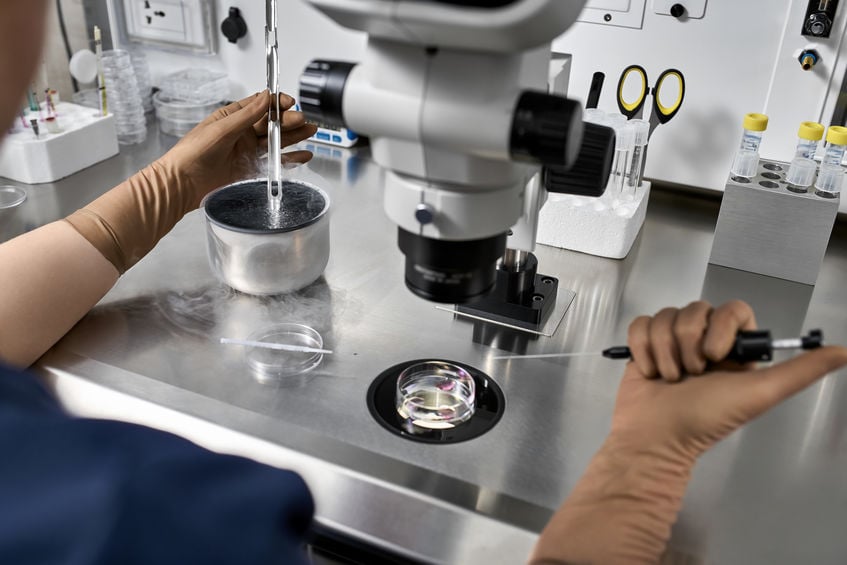An Added Layer To LGBTQ+ Family Planning
Thanks to techniques like in vitro fertilization (IVF), infertile couples can increase the chances of pregnancy. Now, the same procedure helps LGBTQ+ persons and same-sex couples wishing to start or grow a family. Many LGBTQ+ couples have children thanks to techniques like IVF. These techniques also allow fertility clinics to be inventive and offer services like reciprocal IVF. With reciprocal IVF, many LGBTQ+ couples can both participate in the pregnancy.

What is reciprocal IVF?
Reciprocal IVF allows lesbian couples or transgender men to share in the joy of pregnancy. One partner will supply the eggs through the same retrieval process as IVF. The fertility clinic creates the embryo using donor sperm. The embryo is then transplanted into the other partner’s uterus. In other words, that partner becomes a gestational carrier. One parent has a genetic connection to the child while the other becomes the birth mother, even influencing gene expression.
Ready for extraction
Reciprocal IVF starts with a deep conversation between the future parents and sometimes the fertility team. The couple must decide who will supply the eggs and who will be the gestational carrier. To help the process, both individuals may need fertility testing. From there, the IVF process begins. Sometimes, the couple may choose to both have egg extraction and take hormone medication. The excess eggs are frozen for future use. Hormone medication also allows the carrier to prepare the uterus in time for implantation.
Next comes implantation
The fertility clinic will suggest preimplantation genetic testing (PGT) to ensure the clinic uses the most viable eggs. PGT requires additional time to take a cell sample for testing. The test will reveal any genetic abnormalities that can prevent a successful pregnancy. Next, the doctor implants one or more embryos in the carrier, which is then monitored after 14 days for pregnancy.
Benefits, risks, and challenges
One of the most significant benefits to couples is the emotional investment in the process. Both parties can also go through the egg retrieval process so the other partner can carry a future child. IVF significantly improves the chances of pregnancy, but the process is not guaranteed. Factors like age and health will play a role in each cycle’s success. IVF also has risks, like ovarian hyperstimulation syndrome (OHSS). There is also the challenge of transgender men taking testosterone as part of the transition journey. If the clinic is extracting eggs from this partner, there must be discussions around temporarily stopping treatment.
A special collaboration
More and more LGBTQ+ couples are seeking out IVF for family planning. Reciprocal IVF allows both future parents to be deeply involved in the process. The IVF process can be long and challenging. The first step is to find a fertility clinic that helps couples navigate the medical, legal, and even financial challenges that may arise.





